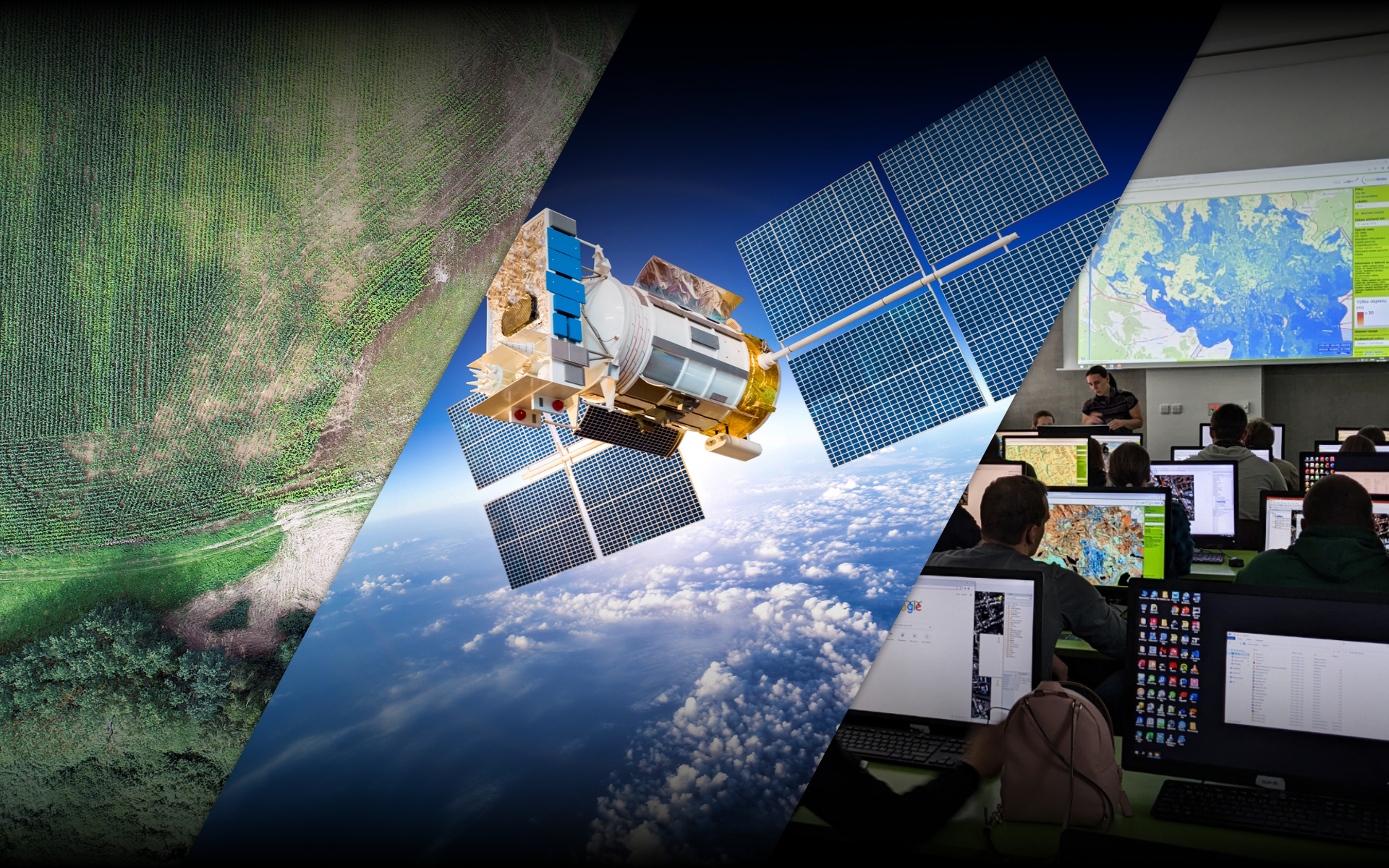How Can a Satellite Detect Movement on Earth?
Author: David Moravec
Electromagnetic radiation behaves like a wave. When a satellite equipped with a microwave antenna sends a radar signal toward Earth, it receives a reflected wave in return. But here’s the trick—waves have phases (they oscillate up and down like ocean waves).
By measuring the phase of the returning signal, the satellite can determine whether the wave is at its peak, bottom, or somewhere in between. This forms the basis of interferometry, a technique that analyses phase differences between signals captured at different times.
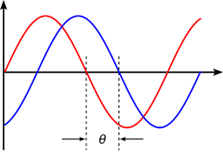
By Peppergrower – Own work, CC BY-SA 3.0, https://commons.wikimedia.org/w/index.php?curid=6007495
If, for example, a satellite receives a wave in one phase today and a slightly shifted phase a week later, it means the distance between the satellite and the ground has changed. This technique allows us to measure ground displacement with millimetre accuracy—over distances of hundreds of kilometres! But to make these measurements as precise as possible, we sometimes need a stable reference point—and that’s where corner reflectors come in.
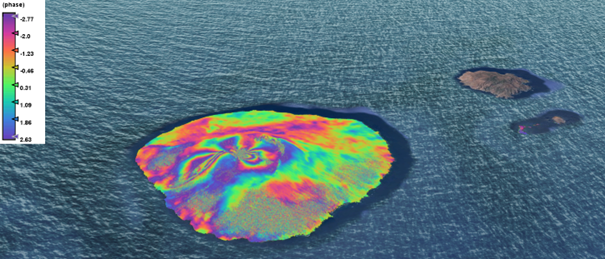
Pico de Fogo right before eruption in 2014 (more stripes = more phase shifts = more deformation – guess where the eruption will occur), interferometry from Sentinel-1 visualised by Google Earth Pro
What Is a Corner Reflector?
Imagine throwing a tennis ball against a wall. If you hit it at an angle, it bounces off in another direction. But what if you aim at the corner where two walls meet the floor? The ball will bounce straight back to you. I like this example, which also shows the conservation of polarization (direction of rotation) in the case of a double bounce.
That’s (almost) exactly how a corner reflector works. It’s a structure made of three perpendicular metal plates that reflect incoming radar waves directly back to the source. This makes them perfect for calibrating and validating radar measurements, as satellites can easily recognize their strong, predictable signal.
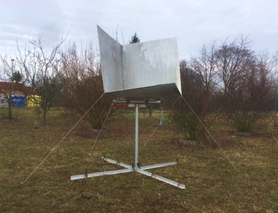
My testing corner reflector (honestly it wasn’t the best design, but you learn by making mistakes!)
How to Outshine the Surroundings?
Not all corner reflectors perform equally well. The environment they are placed in plays a crucial role.
In open, flat areas—like grasslands or deserts—natural radar reflections are weak, so even a small corner reflector can stand out. But in cities, mountainous regions, or forests, the radar echoes from buildings, rocks, and trees create a lot of interference. In such cases, you need a large and powerful corner reflector to dominate the radar return and ensure a clear signal.
In theory, corner reflectors can take many forms, including spherical designs. However, in practice, trihedral corner reflectors—made of three perpendicular metal plates—are the most common. They are simple to construct, highly durable, and provide a stable, predictable reflection. However, they do have a drawback: the best radar reflection occurs only when the incoming wave bounces off all three plates in sequence. This is unfortunately true in the corners of trihedral corner reflector. To improve their performance, engineers sometimes cut off the corners and enlarge the central area, ensuring a stronger reflection over a wider range of angles.
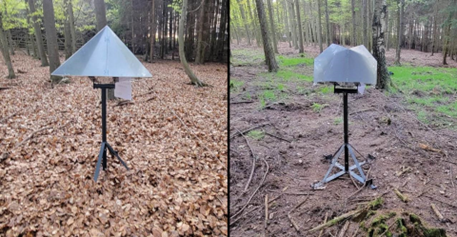
Our more advanced designs. The most common triangular (left) and optimized corner reflector (right).
Theory vs. Reality: Why Predictions Are Tricky?
It seems straightforward—just calculate the angle of incidence and reflection, right? Unfortunately, reality is much more complex. Radar waves are electromagnetic fields, and their interaction with a corner reflector involves intricate wave interference patterns.
There are simplified equations based on basic optics (where the angle of incidence equals the angle of reflection), but these only provide rough estimates. For more accurate predictions, scientists use advanced electromagnetic simulations in specialized software. The most precise way to determine a reflector’s true performance is to test it in an anechoic chamber, where reflections from the surroundings are eliminated.
Even with all these theoretical models and lab tests, we can never be 100% sure how a corner reflector will perform in real-world conditions. Its interaction with the environment can cause constructive or destructive interference, which may either enhance or weaken the signal.
To minimise negative effects, we can follow few advises. Tilting the reflector slightly upwards helps minimize unwanted ground reflections. The support structure and surrounding materials should be non-reflective to avoid distorting the signal. And most importantly— No Corner Reflector Is Too Big!
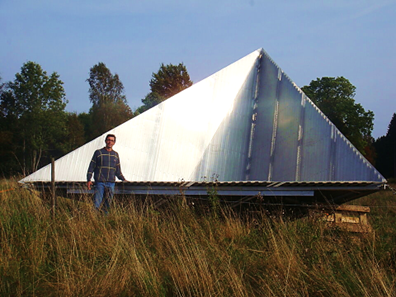
5 meter (700 kg) corner reflector from Credit: ESA https://www.esa.int/Applications/Observing_the_Earth/FutureEO/Biomass/Campaign_reveals_how_forest_change_can_be_monitored_from_space
If anyone believes they can perfectly predict how a corner reflector will behave in every scenario, they should remember Clint Eastwood’s words:
„If you want a guarantee, buy a toaster!“
